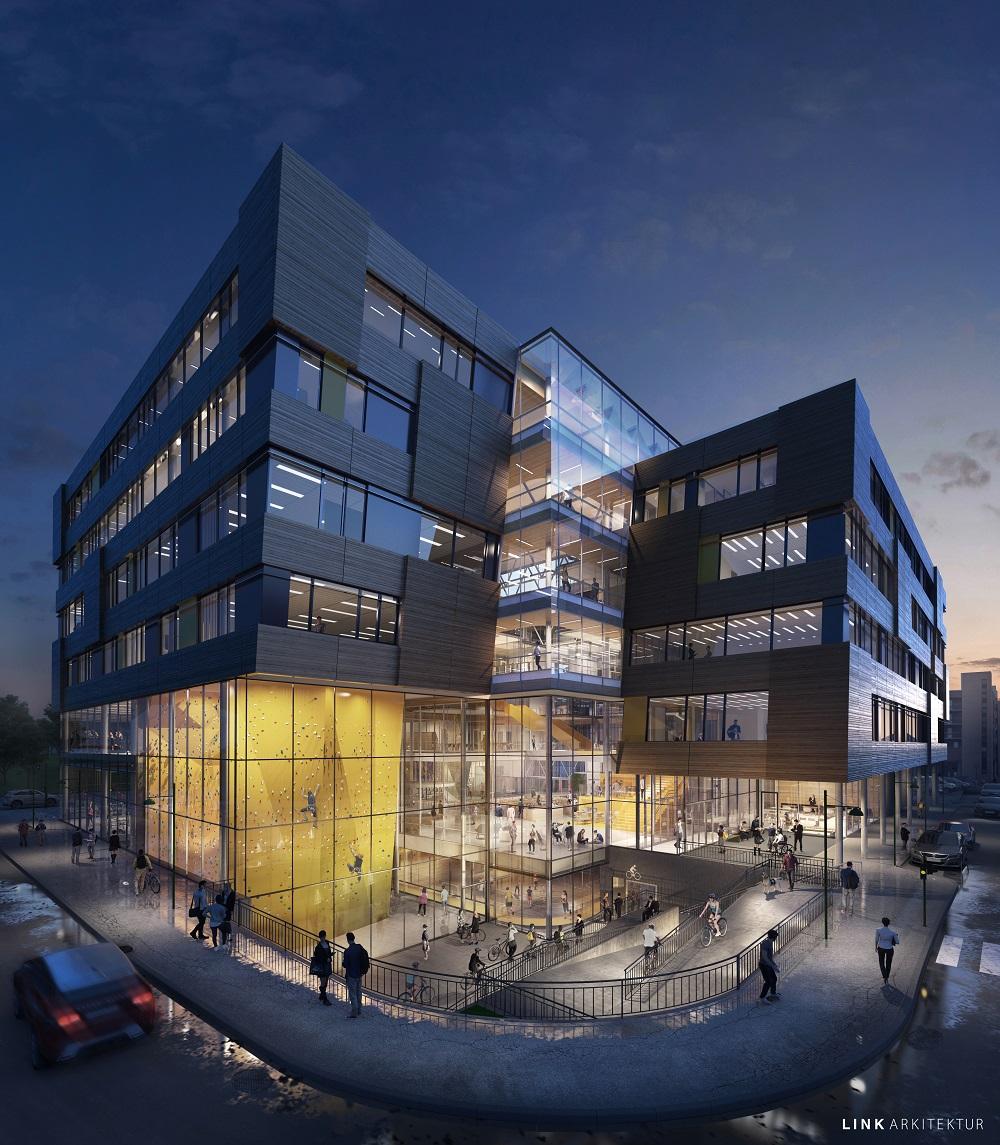Elgesetergate 10 - Why - Campus development
Why are we building?
Why are we building?
On 19 June 2015, the Storting (Norwegian parliament) agreed to grant NOK 5 million for the design of a new building for health and social care disciplines at the then Sør-Trøndelag University College (HiST), in terms of Chapter 2445 Item 30 Design of Buildings from the Ministry of Local Government and Modernisation.
The Ministry of Education and Research then commissioned Statsbygg (the Norwegian Directorate of Public Construction and Property) to design a new building for health and social care disciplines for HiST, until completion of the full conceptual design project. On 1 January 2016, HiST merged with NTNU.
History
The programs in health and social care were located in Ranheimsveien from 1994 to 2011, when they were relocated to temporary premises in the converted office building at Tunga in 2011. The move to a new building for teaching and research will help to unify the environments in health and social care at NTNU across faculties. These environments will benefit from being close to each other.
The programs scheduled to move into the building belong to the Faculty of Medicine and Health Sciences (audiologist, occupational therapist and physiotherapist programs at the Department of Neuroscience and Movement, the social educator program at the Department of Mental Health and the radiographer program at the Department of Circulation and Imaging) and the Faculty of Social and Educational Sciences (social worker and child welfare programs at the Department of Social Work).
NTNU’s space
The Ministry of Education and Research specified that the space and facility plan for the project should include up to 13,000 sq m gross for NTNU. This means that NTNU cannot extend its use of the premises in Elgesetergate 10, even if it needs more space.
Space for the student welfare association
At a Government conference held on 16 June 2016, the Government agreed to a combined building for NTNU and the student welfare association, Studentsamskipnaden (Sit), in Elgesetergate 10–14. This is the basis for the full conceptual design project. The Sit project will total 5,000 sq m gross, and will be funded by Sit.
Shared use
In collaboration with users, Statsbygg (the Norwegian Directorate of Public Construction and Property) must carefully evaluate the potential for shared use of premises - the opportunities to use university premises in nearby buildings at Øya, Hesthagen, Kalvskinnet and Gløshaugen.
Shared use of premises should improve the use of space in the buildings and facilitate cooperation across disciplines. Shared use may be suitable for particular areas such as laboratories, rooms designed for skills development or auditoriums.
For effective use of premises, Statsbygg will work together with users to evaluate the frequency of use of the areas. For premises with high construction and operating expenses, such as rooms for skills development, the Ministry expects especially high frequency of use. The new building must enable synergy with the premises that NTNU uses today.
Why share a building with Sit?
A shared building for NTNU and Sit, for fitness and health, is a natural choice for the portfolio of subjects and the values that the professional communities want the new teaching and research building to reflect.
Locating the health and social care programs together with a sports center will provide added value for both, which could not have been achieved with two separate buildings. A combined building with a mix of teaching, social meeting places and fitness activities will help to create an attractive, inspiring and vibrant campus.
Several disciplines will use the sports section in their teaching and research, and will alternate between the rooms designed for skills development and the sports section.
NTNU and Sit will share common areas
The space and facility plan for Elgesetergate 10 is based on extensive shared use of premises internally in NTNU and between the Sit sports center and NTNU. The sports areas will not necessarily be separated from the teaching and student areas, but will have a “zone boundary” at the doors, with access control through valid access cards to the fitness facilities.
The requirements specification
The requirements specification describes Statsbygg’s requirements for performance and for the finished building with outdoor areas. See also the basis for the requirements specification.
Why are we building?

Mission for the new building
Mission for the new building
NTNU
A nationally leading arena for interdisciplinary professional programmes, research and knowledge development in health and social care disciplines, with professional synergies with society and the business community.
Sit sports centre
A social and inclusive arena that facilitates students’ growth, development and mastery of skills, on both a physical and a psychosocial level, through wellness services, meeting places, fitness facilities and cafeterias.
